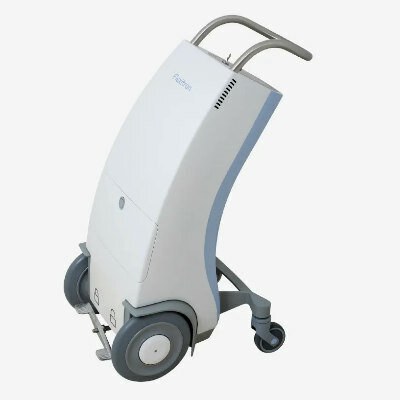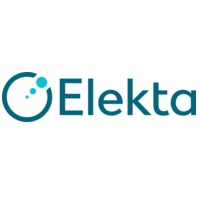New Method Improves Accuracy of NIRF-IVUS Measurements in Cardiovascular Imaging
|
By MedImaging International staff writers Posted on 17 Apr 2023 |

Intravascular ultrasound (IVUS) allows cardiologists to capture images of blood vessels' interiors using a slim ultrasound probe, which can then be used to assess issues like arterial thickening due to fat or plaque accumulation. Near-infrared fluorescence (NIRF) imaging is employed alongside IVUS for a more comprehensive evaluation of blood vessels. NIRF relies on fluorescent agents that highlight biological processes within the body. When injected into the bloodstream, these agents bind to specific pathology-related compounds on vessel walls, such as proteins or nucleic acids. The resulting fluorescence signals are combined with IVUS images for enhanced accuracy. However, during NIRF-IVUS measurements, the distance between the NIRF detector and the blood vessel wall continually changes. This presents a challenge, as blood attenuates the fluorescence signals' intensity, and the "amount" of blood between the NIRF detector and the vessel wall constantly varies.
A team of researchers led by the Technical University of Munich (TUM, Munich, Germany) has come up with an innovative solution to this problem. In a study, the team created a new technique to measure blood's fluorescence attenuation using a "guidewire" that moves the NIRF-IVUS probe. The concept is based on the constant visibility of the guidewire to the NIRF probe. By coating the guidewire with a known concentration of fluorescent particles, the guidewire signal offers an indirect measure of blood attenuation in the current image. The distance between the NIRF probe and the guidewire, as well as the blood vessel wall, is determined via IVUS, allowing for the calculation of a correction factor for the fluorescence signal measured at the blood vessel wall after a simple calibration procedure.
The team tested their technique in a clinical model using a small NIRF-IVUS system from a previous study and conducted experiments on capillary phantoms, which mimic small blood vessels' properties. They observed a 4.5-fold improvement over uncorrected NIRF signals and <11% errors for target signals, showing great promise. The correction method also maintained a mean accuracy of 70% in tissue experiments. These figures are significantly better than those achieved by other correction methods that use average attenuation factors instead of calculating them for each frame and precise probe-to-vessel distances measured via IVUS. The researchers believe that incorporating their technique into clinical practice should be relatively straightforward since no major modifications to existing equipment are necessary. With the appropriate coatings, the guidewire can serve as a reference standard for other intravascular fluorescence imaging modalities and optical methods beyond fluorescence.
“This new method for correcting intravascular NIRF signals is simple and accurate and could pave the way for in vivo studies and eventual clinical translation,” said Brian Pogue, Professor of Medical Physics at the University of Wisconsin-Madison.
Related Links:
TUM
Latest Ultrasound News
- Deep Learning Advances Super-Resolution Ultrasound Imaging
- Novel Ultrasound-Launched Targeted Nanoparticle Eliminates Biofilm and Bacterial Infection
- AI-Guided Ultrasound System Enables Rapid Assessments of DVT
- Focused Ultrasound Technique Gets Quality Assurance Protocol
- AI-Guided Handheld Ultrasound System Helps Capture Diagnostic-Quality Cardiac Images
- Non-Invasive Ultrasound Imaging Device Diagnoses Risk of Chronic Kidney Disease
- Wearable Ultrasound Platform Paves Way for 24/7 Blood Pressure Monitoring On the Wrist
- Diagnostic Ultrasound Enhancing Agent to Improve Image Quality in Pediatric Heart Patients
- AI Detects COVID-19 in Lung Ultrasound Images
- New Ultrasound Technology to Revolutionize Respiratory Disease Diagnoses
- Dynamic Contrast-Enhanced Ultrasound Highly Useful For Interventions
- Ultrasensitive Broadband Transparent Ultrasound Transducer Enhances Medical Diagnosis
- Artificial Intelligence Detects Heart Defects in Newborns from Ultrasound Images
- Ultrasound Imaging Technology Allows Doctors to Watch Spinal Cord Activity during Surgery

- Shape-Shifting Ultrasound Stickers Detect Post-Surgical Complications
- Non-Invasive Ultrasound Technique Helps Identify Life-Changing Complications after Neck Surgery
Channels
Radiography
view channel
Novel Breast Imaging System Proves As Effective As Mammography
Breast cancer remains the most frequently diagnosed cancer among women. It is projected that one in eight women will be diagnosed with breast cancer during her lifetime, and one in 42 women who turn 50... Read more
AI Assistance Improves Breast-Cancer Screening by Reducing False Positives
Radiologists typically detect one case of cancer for every 200 mammograms reviewed. However, these evaluations often result in false positives, leading to unnecessary patient recalls for additional testing,... Read moreMRI
view channel
PET/MRI Improves Diagnostic Accuracy for Prostate Cancer Patients
The Prostate Imaging Reporting and Data System (PI-RADS) is a five-point scale to assess potential prostate cancer in MR images. PI-RADS category 3 which offers an unclear suggestion of clinically significant... Read more
Next Generation MR-Guided Focused Ultrasound Ushers In Future of Incisionless Neurosurgery
Essential tremor, often called familial, idiopathic, or benign tremor, leads to uncontrollable shaking that significantly affects a person’s life. When traditional medications do not alleviate symptoms,... Read more
Two-Part MRI Scan Detects Prostate Cancer More Quickly without Compromising Diagnostic Quality
Prostate cancer ranks as the most prevalent cancer among men. Over the last decade, the introduction of MRI scans has significantly transformed the diagnosis process, marking the most substantial advancement... Read moreNuclear Medicine
view channel
New SPECT/CT Technique Could Change Imaging Practices and Increase Patient Access
The development of lead-212 (212Pb)-PSMA–based targeted alpha therapy (TAT) is garnering significant interest in treating patients with metastatic castration-resistant prostate cancer. The imaging of 212Pb,... Read moreNew Radiotheranostic System Detects and Treats Ovarian Cancer Noninvasively
Ovarian cancer is the most lethal gynecological cancer, with less than a 30% five-year survival rate for those diagnosed in late stages. Despite surgery and platinum-based chemotherapy being the standard... Read more
AI System Automatically and Reliably Detects Cardiac Amyloidosis Using Scintigraphy Imaging
Cardiac amyloidosis, a condition characterized by the buildup of abnormal protein deposits (amyloids) in the heart muscle, severely affects heart function and can lead to heart failure or death without... Read moreGeneral/Advanced Imaging
view channel
New AI Method Captures Uncertainty in Medical Images
In the field of biomedicine, segmentation is the process of annotating pixels from an important structure in medical images, such as organs or cells. Artificial Intelligence (AI) models are utilized to... Read more.jpg)
CT Coronary Angiography Reduces Need for Invasive Tests to Diagnose Coronary Artery Disease
Coronary artery disease (CAD), one of the leading causes of death worldwide, involves the narrowing of coronary arteries due to atherosclerosis, resulting in insufficient blood flow to the heart muscle.... Read more
Novel Blood Test Could Reduce Need for PET Imaging of Patients with Alzheimer’s
Alzheimer's disease (AD), a condition marked by cognitive decline and the presence of beta-amyloid (Aβ) plaques and neurofibrillary tangles in the brain, poses diagnostic challenges. Amyloid positron emission... Read more.jpg)
CT-Based Deep Learning Algorithm Accurately Differentiates Benign From Malignant Vertebral Fractures
The rise in the aging population is expected to result in a corresponding increase in the prevalence of vertebral fractures which can cause back pain or neurologic compromise, leading to impaired function... Read moreImaging IT
view channel
New Google Cloud Medical Imaging Suite Makes Imaging Healthcare Data More Accessible
Medical imaging is a critical tool used to diagnose patients, and there are billions of medical images scanned globally each year. Imaging data accounts for about 90% of all healthcare data1 and, until... Read more
Global AI in Medical Diagnostics Market to Be Driven by Demand for Image Recognition in Radiology
The global artificial intelligence (AI) in medical diagnostics market is expanding with early disease detection being one of its key applications and image recognition becoming a compelling consumer proposition... Read moreIndustry News
view channel
Bayer and Google Partner on New AI Product for Radiologists
Medical imaging data comprises around 90% of all healthcare data, and it is a highly complex and rich clinical data modality and serves as a vital tool for diagnosing patients. Each year, billions of medical... Read more



















